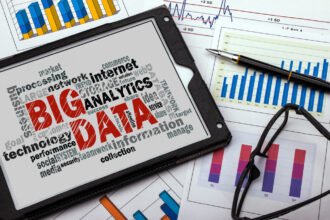Website personalization and using big data to drive online sales specifically is on the mind of every marketing professional.
We have moved from the era of not knowing how to use big data to having way too much data, and having to narrow it down to what we really need out of everything available. What level or personalization do we need to really drive sales?
This is where we need to ask ourselves questions. Which sales are actually date-driven, and what data is actually driving those sales? Here are some good places to start.
Data Determines How Well You Know Your Customer
You have all of this information in your own set of data from the first transaction the customer makes with your business. You have a name, address, method of payment, and what they purchased.
Start simply, with personalized home pages, landing pages, and product description pages. You can personalize these by location using different domains, sub domains, or metro pages, and personalize them even more specifically by name and interest from there.
Several questions then follow, questions you can use to inform future interactions with this customer and others. Where do they live? What did they buy? What payment method did they use? Is this just a single purchase, or could this be part of a trend or a suite of products the customer might need?
As you develop a profile of this customer and others, you will be able to spot trends. Are customers from certain areas buying certain products? Is there a trend of accessories they also buy at the same time or come back to order later?
This enables you to suggest products using small pieces of data gathered within your enterprise. While full-blown personalization involves much more than just greeting the customer by name when they return, these simple steps can be the first easy ones to take. The better you know your customer, the easier it is to market to them in a personal way.
Build Loyalty and Trust
As you learn what a customer individually and other customers like them are drawn to, you can market those things to them specifically. This will build their trust in you and your brand because you know them and seem to anticipate their wants and needs.
As a result, they will be loyal, and more likely to simply return to your site when they need to make a similar purchase in your niche. This is especially vital if you sell consumables. You want to be the first brand your customer thinks of, and this trust can make them less likely to shop around.
The other part of building and keeping this loyalty and trust is to be gentle. Don’t over personalize or over market to the customer. They must believe that you have their best interests at heart, and your suggestions are merely to make their lives better.
Personalization must not just seem like a natural conversation, it needs to be one. You can learn a lot about your customer by social signals as well, and the conversation you have with them should carry across platforms, from social to your website to even your email campaigns.
Remember, social media is for being social, and sales is about developing a relationship with your customer. You can’t do this with part time efforts and limited resources. Your customer will notice that your relationship is only a surface one, and related simply to business transactions.
The result is that they will shop around in search of a better deal, but this is not always about price. It is about relationship, perceived value, and service. Think of Apple, who sells computers that are much more expensive than much of their competition, but they have a community, brand loyalty, quality, and they work to build a relationship with their customers.
The result is that it does not matter what the products cost, the relationship trumps the temptation to shop around, and they continue to develop that community and loyalty.
While you may not be nearly as large as Apple, you can apply the same principles to develop loyalty and trust with your customers, inviting them to return again and again.
Make the Right Offer at the Right Time
All of this then comes down to one final thing. The better you know your customer, the more loyal they are, the more likely you are to be able to make the right offer to them at the right time, just when they are ready to buy.
How do you know when this moment is? The answer is both simple and complex, but it can be broken down into the fact that you have data and you know how to use it.
This is the key to big data and marketing. Not just data, but usable data that informs your marketing decisions.
You know what your customer buys, and how they like to buy it, even what payment method they prefer to use. You even know how frequently they visit your site to buy certain products. So you use that information to make the right offer.
For example, customer X buys a consumable product about every 90 days, and they use PayPal to check out nearly every time. It has been 85 days since they last visited your site to buy that product.
When they visit your site next, they are greeted with this message: “Hey, Customer X, this week only, buy X product and get 10% off when you check out using PayPal.”
You have achieved personalization at a very simple level. You know their name, that they buy the product from you often. You have created a sense of urgency that falls within their time window, and have made them an offer based on their preferred payment method.
This may seem like a simple example, but it really is at the heart of personalization. The more usable data you have, the simpler this process will be. Get to know your customer. Build loyalty and trust. Your sales are then data-driven, and you can make the right offer at the right time.







